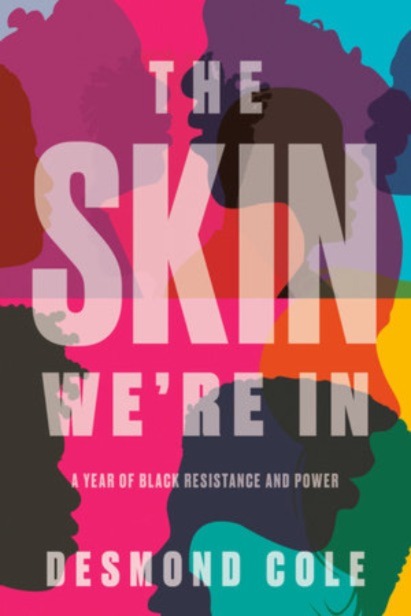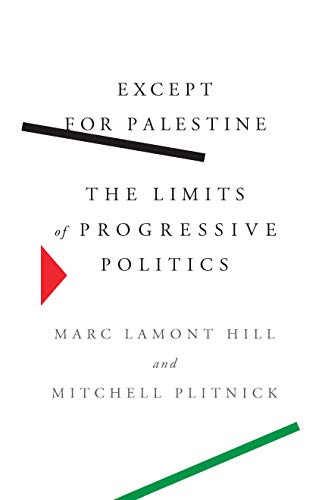Schism: China, America and the Fracturing of the Global Trading System, Paul Blustein, Centre for International Governance Innovation, 2019, pp. 266, ISBN: 978-1-928096-85-6
“We can’t allow China to rape our country, and that’s what they are doing,” said Donald Trump in 2016 during one of his presidential rallies in Indiana, marking what was to become a prolonged trade war between the two countries. After increasingly hostile language, offensive trade policies and fluctuating markets, the two agreed to a cease-fire in January 2020. With the signing of the initial trade deal, which is set to open the Chinese market to American goods, while committing China to purchase $200 billion worth of American goods, the trade war may be over.
Judging by the highly volatile, scandalous and headline-grabbing Trump Presidency, one might be forgiven for thinking that all of it started with Trump. However, in his book Schism, former Washington Post and Wall Street Journal journalist Paul Blustein offers a longer historical view to suggest that the trade woes besetting Sino-American relations date back to, at least, the early 20th century with the incorporation of China into the world trade system. Blustein explores the bilateral negotiations between the United States and China before China joined the WTO, the ensuing “China Shock,” and ways in which Chinese state intervention in its markets had impacted trade relations between the two countries.
Blustein begins with a thorough investigation of the negotiations that preceded China’s accession to the WTO in November 2001. This diplomatic history reveals the intentions of both sides and points to the fact that the US negotiators wanted to extract maximum possible concessions from the Chinese in order to further open up the world’s biggest market for American capital. Both the Chinese and the American negotiators played a multi-level game, balancing domestic political concerns and international trade relations. The American side was headed by Charlene Bershefsky, who was appointed deputy trade representative in 1993 before rising to the post of trade representative in 1997, while a coterie of Beijing officials represented the Chinese side. They fought out long, drawn-out battles using trickery and deception to ensure each side gained more than the other. In a zero-sum game such as international trade, China was seemingly set to lose. It was China that had to restructure its domestic market to open up for foreign companies and ensure that foreign capital has “national treatment,” meaning that the treatment of local companies would have to be extended to foreign ones.
For an economy that was based mostly on central planning and state-owned enterprises, of which only 12 were allowed to import foreign goods and sell them at stores only foreigners were allowed to purchase from, such market-based restructuring posed a political problem. In the zeitgeist of the post-Cold War era, steady march towards liberal democracy and free markets seemed to have been espoused by China’s leaders themselves. Zhu Rongji, who served as the Premier of PRC from 1998 to 2003, appeared accommodating to American demands. He agreed to lower tariffs on over 1000 items, including those on automobiles and agriculture, effectively putting the state-owned companies and farmers at risk of having their livelihoods lost. Prior to the much-vaunted Zhu-Clinton Summit of 1999, Chinese trade officials further agreed to a litany of concessions. China was to open up its insurance market, aviation, electronics and take steps to ensure intellectual property rights were respected. The impetus behind China’s push to join the WTO was its textile and apparel industry. By joining the trade body, China would have ensured a global reach for its industry, which was more competitive than others. However, had the Americans agreed, the Carolinas would have been heavily impacted with the shift to more “competitive” Chinese imports, leaving a large number of workers unemployed and damaging Clinton politically. Hence, the talks of 1999 came to naught.
The inability to agree on the terms of Chinese accession had clear political implications. The Americans feared the impact cheaper Chinese exports would have at home, but also the Chinese state intervention in the market. By providing its domestic producers with subsidies and favourable socio-economic regimes, China was making herself more competitive in the world market. This blurred line between business and government irked American politicians but presented little worry to the business community, which was salivating at the opportunity to enter the lucrative market. On the Chinese side, their anxiety was reflected in the expression “the wolf is at the door.” It was believed that its sovereignty would be damaged, and its industry crippled by opening up to cheaper foreign grain. Farmers would lose their livelihoods, and millions of industrial sector jobs would be lost in the short term.
In late 1999, it was clear that both sides wanted to seal the agreement. It eventually materialized in the form of extensive Chinese concessions. China agreed to allow the US to impose safeguarding measures by levying duties on specific Chinese products that were deemed to have adversely affected a US industry, a rather broad and vague point, which set the stage for future trade wars. The US would also be allowed to apply the non-market economy status to China for 15 years following Chinese accession to the WTO. This provision permitted the US to apply high duties to products deemed to be sold at “less than fair value,” due to market-distorting effects of Chinese state interference in the market. Import quotas and duties on industrial and agricultural goods would be significantly lowered, and foreign companies seeking to produce in China were allowed up to 50% ownership in these ventures. Foreign firms were further allowed to establish their own retail and wholesale networks, as well as after-sales services without Chinese intermediaries. Overall, the agreement seemed like China had capitulated to American demands, and China formally joined the WTO in December 2001.
What seemed like a major American trade coup quickly turned into a disaster. Foreign direct investment flowed into China, and Chinese GDP rose steadily, eventually surpassing major economies such as Japan and Germany. Large flows of foreign investment fundamentally transformed China. Industrial manufacture replaced agricultural production, and massive factories began being built atop rice paddies, leading to the largest migration in peacetime. It is estimated that 150 million people moved to the new manufacturing centers that littered the Chinese coast. These heavily exploited, underpaid and overworked workers were the driving force behind China’s rise, allowing her to capture increasing market shares for specific products in a relatively short period. The explosion of Chinese exports translated into lower consumer prices in the world. As Blustein points out, “every one percentage point increase in the share of spending on Chinese goods in a given industry would lead to an average of three percentage points fall in prices for that industry.”
Cheap labour led to massive capital flight from the West in what became known as the “China Shock.” Some economists calculated that the increase in Chinese imports, the effect of shifting production to China, led to the direct loss of 560 thousand manufacturing jobs in the US between 1999 and 2011. Including industry linkages, those businesses supplying material and services to manufacturing, the total jobs lost in the US to Chinese imports amounted to 2.4 million. While seeking to open China to foreign capital, the US in effect facilitated capital flight from its territory and led to a restructuring of its economy, eliminating millions of manufacturing jobs. The negotiators overlooked the fact that capital is in search of cheap labour, which maximizes profit. In a clear contest between business and labour, the American negotiators sided with the companies which were reaping massive profits. In contrast, the American workers, as well as the Chinese workers, suffered.
The initial hope of the American negotiators was to ensure that China restructures its political regime to adapt to the international trade order, which calls for the separation of State and markets. While they had like-minded counterparts, this may have seemed like a legitimate hope.
However, the features of the Chinese political regime fundamentally clashed with the requirements of the international trade order. The Chinese State was aptly named “China Inc.,” a combination of dynamic private enterprise and a party state. At the root of China Inc. are three institutions that link the State to the economy. The State-owned Assets Supervision and Administration Commission (SASAC) manages State-owned enterprises economically and politically. Central Huijin Investment Ltd. holds a majority of shares in four giant banks that dominate China (the Bank of China, the Industrial and Commercial Bank of China, the China Construction Bank and the Agricultural Bank of China). Lastly, the so-called “super ministry,” the National Development and Reform Commission (NDRC), is responsible for the five-year plans. By mobilizing these branches of the politico-economic machine, the Chinese State can intervene to ensure its favourable position in the global market.
SASAC acts as a direct link between the Party and the economy, with the heads of the SOEs appointed by the Politburo to implement national policies. These industrial behemoths can act to provide material at set prices to other industrial units, thereby lowering production costs and making Chinese exports more competitive. Should they lack funding, Central Huijin Investment Ltd. can provide cheap loans and recapitalize banks using foreign reserves amassed from trade surpluses. Lastly, the NDRC can set national policies and devise plans to implement them by creating legislature beneficial to the attainment of those goals. Moreover, the ability to manage the economy and control the national currency, the renminbi, allows China to keep the exchange rate low despite a surging trade surplus, which would usually strengthen the currency and make exports less competitive.
At the heart of the Sino-American trade dispute lies a fundamental difference in political regimes. The US’ historical and continued attempts to force reform on China are rebuffed due to the strength of the Chinese economy, which is, in turn, the product of continued State intervention. Similarly, China is so enmeshed in the global supply chains that her very stability rests on the continuation of status-quo. The newly imposed US tariffs on Chinese goods hurt US producers who rely on the shipments of cheap material to place their products on the US market. Businesses have lobbied the Trump administration against them. Still, the workers in industries devastated by exports from China have supported them, hoping to return to their workplaces as producers shift their production to the US. Alas.
Blustein places his bets on the restructuring of the WTO. He calls for the WTO to amend its rules to address challenges presented by China’s socialist market economy and, by extension, enhance and strengthen faith in the institution and its rules-based system. He incorrectly locates the fallout in the rigidity of the WTO and fails to realize the very problem of unequal exchange that WTO legitimizes and calls for. World capitalist system structures trade according to global labour arbitrage, which allows unrestrained capital to freely roam the world in search of cheap and exploited labour. If China restructures, leading to higher labour costs, capital will flee to other countries. We can see evidence of this in the increasing shift of production to Vietnam and Malaysia.
Even if the US succeeds in forcing China to restructure, the problems will not go away. They will merely shift on to another country where the workers toil under oppressive conditions, for miserable wages, and contribute to staggering GDP growths and cheap products for the Western consumers.




